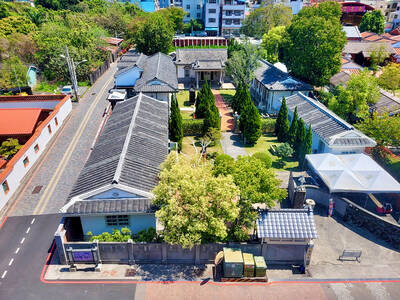Pop star Richie Jen (任賢齊) makes his foray into feature filmmaking with All You Need is Love (落跑吧愛情). Sadly, the romantic comedy that Jen co-directs and stars in, is a total clunker.
The story, set against the picturesque backdrop of Penghu and starring Taiwanese diva Shu Qi (舒淇), is pretty to look at. But this isn’t enough to save the film from being an empty melange of hackneyed cliches and pedestrian plots.
Jen plays the poor local boy, Wu, running a bed and breakfast in Penghu. Shu is the rich Chinese girl, Yeh Fenfen, who comes from China’s Shanxi Province to see the islet that her deceased parents always wanted to visit but never got the chance. The two get off on the wrong foot when they first meet, but gradually they overcome their differences and fall in love.

Photo courtesy of Hualien Media
Meanwhile, external conflicts put their new love on trial. One takes up the form of Fenfen’s wealthy uncle, who tries to tear the lovebirds apart by forcing Fenfen to marry her rich, handsome fiance who speaks in an American accent.
All You Need is Love tells a formulaic story, with a bunch of favorite movie sidekicks, such as Jiu Kong (九孔) and Ma Nien-hsien (馬念先), thrown in. It has everything that a Taiwan-China co-production is expected to have these days: big-name Taiwanese stars who can sell tickets in China and beautiful shots of Taiwanese scenery to promote tourism.
Penghu looks as spectacular as ever, and Jen and Shu look cute together. But one cannot shake off the feeling that the filmmakers were either too lazy or simply lacked the ability to make the overworked genre interesting.
The verdict? Even if you are home alone and bored on a Monday night, and All You Need is Love is the only thing on TV, turn it off and go find something else to do.

April 28 to May 4 During the Japanese colonial era, a city’s “first” high school typically served Japanese students, while Taiwanese attended the “second” high school. Only in Taichung was this reversed. That’s because when Taichung First High School opened its doors on May 1, 1915 to serve Taiwanese students who were previously barred from secondary education, it was the only high school in town. Former principal Hideo Azukisawa threatened to quit when the government in 1922 attempted to transfer the “first” designation to a new local high school for Japanese students, leading to this unusual situation. Prior to the Taichung First

Chinese Nationalist Party (KMT) Chairman Eric Chu (朱立倫) hatched a bold plan to charge forward and seize the initiative when he held a protest in front of the Taipei City Prosecutors’ Office. Though risky, because illegal, its success would help tackle at least six problems facing both himself and the KMT. What he did not see coming was Taipei Mayor Chiang Wan-an (將萬安) tripping him up out of the gate. In spite of Chu being the most consequential and successful KMT chairman since the early 2010s — arguably saving the party from financial ruin and restoring its electoral viability —

The Ministry of Education last month proposed a nationwide ban on mobile devices in schools, aiming to curb concerns over student phone addiction. Under the revised regulation, which will take effect in August, teachers and schools will be required to collect mobile devices — including phones, laptops and wearables devices — for safekeeping during school hours, unless they are being used for educational purposes. For Chang Fong-ching (張鳳琴), the ban will have a positive impact. “It’s a good move,” says the professor in the department of

Toward the outside edge of Taichung City, in Wufeng District (霧峰去), sits a sprawling collection of single-story buildings with tiled roofs belonging to the Wufeng Lin (霧峰林家) family, who rose to prominence through success in military, commercial, and artistic endeavors in the 19th century. Most of these buildings have brick walls and tiled roofs in the traditional reddish-brown color, but in the middle is one incongruous property with bright white walls and a black tiled roof: Yipu Garden (頤圃). Purists may scoff at the Japanese-style exterior and its radical departure from the Fujianese architectural style of the surrounding buildings. However, the property